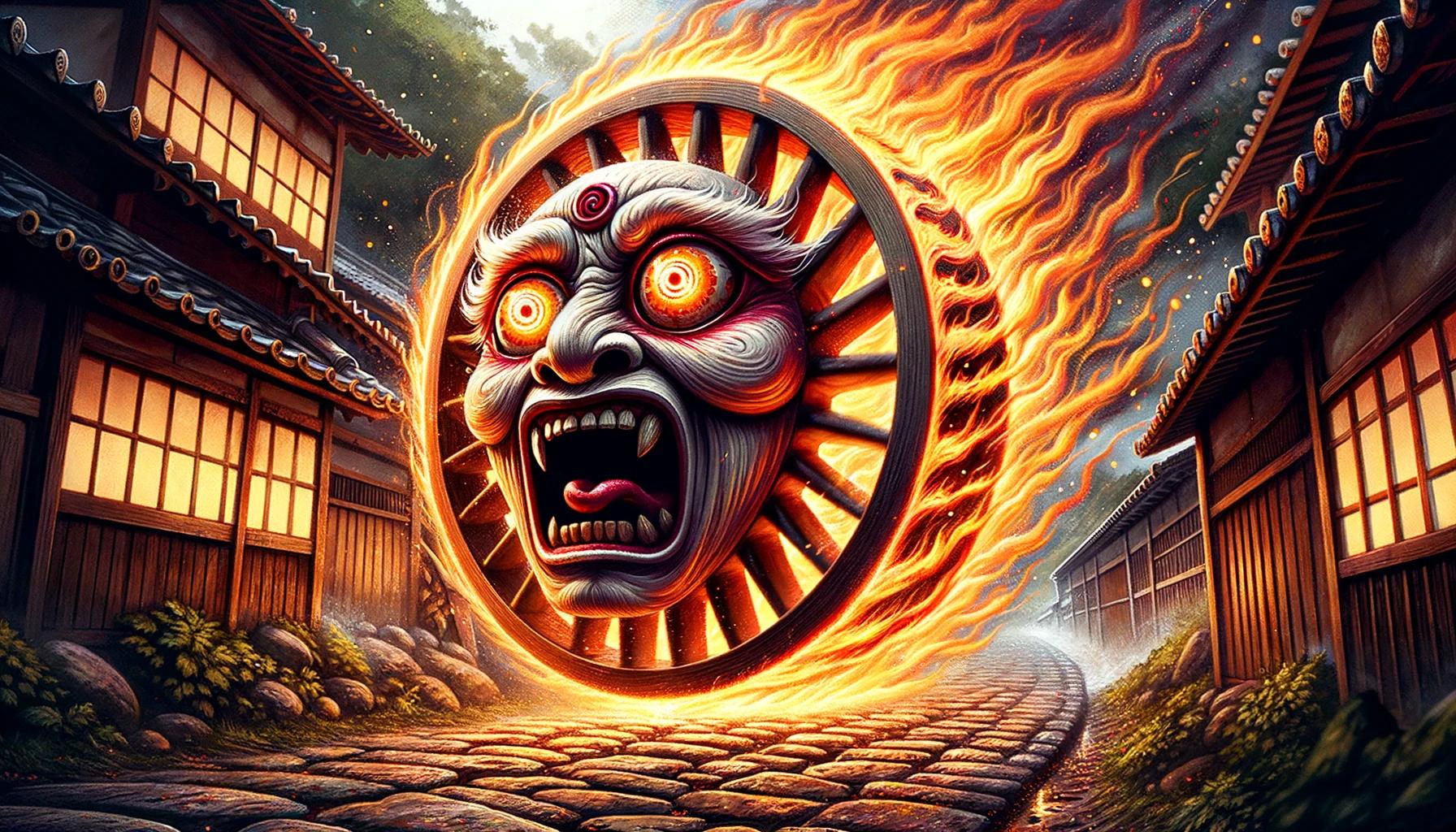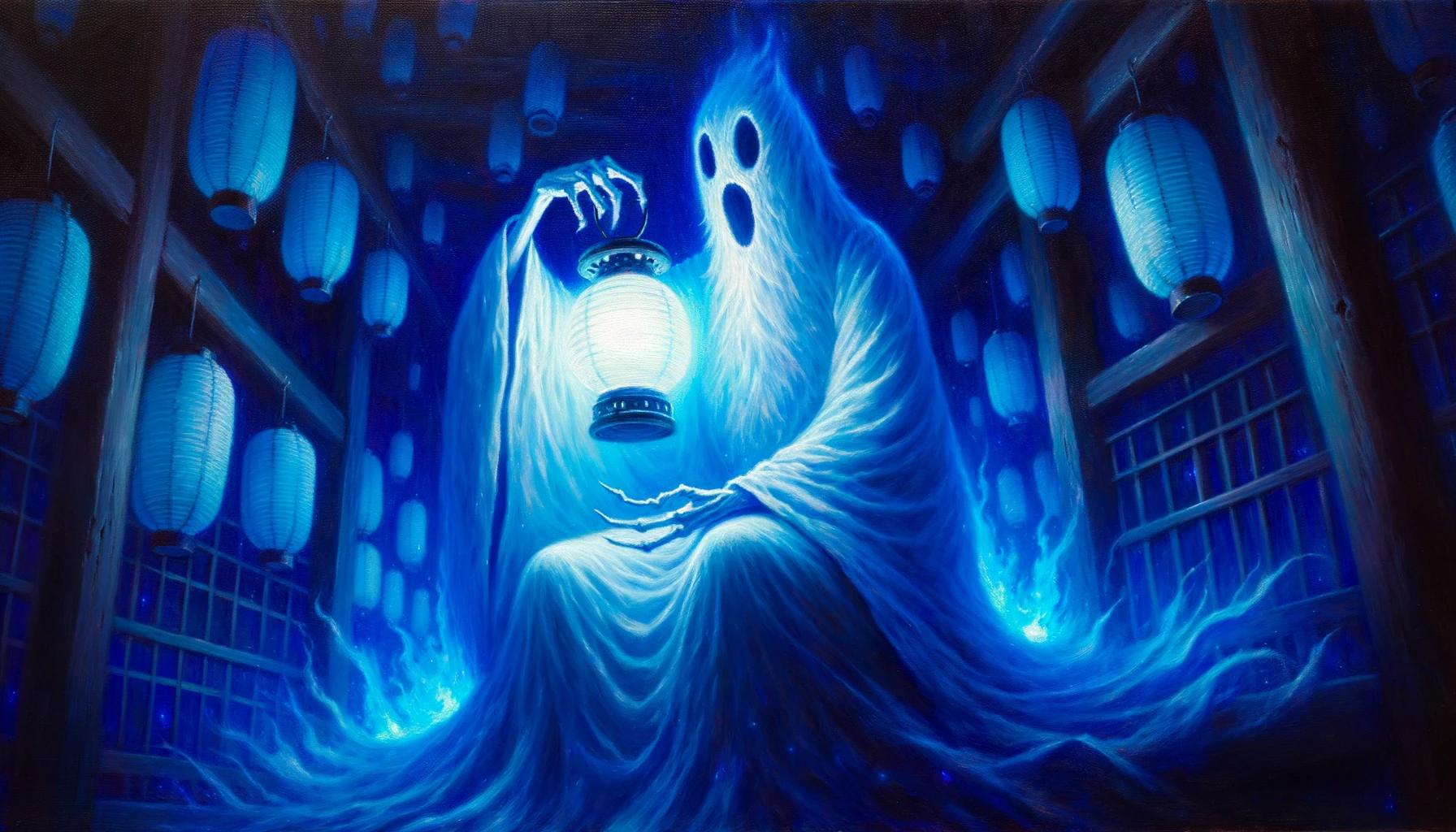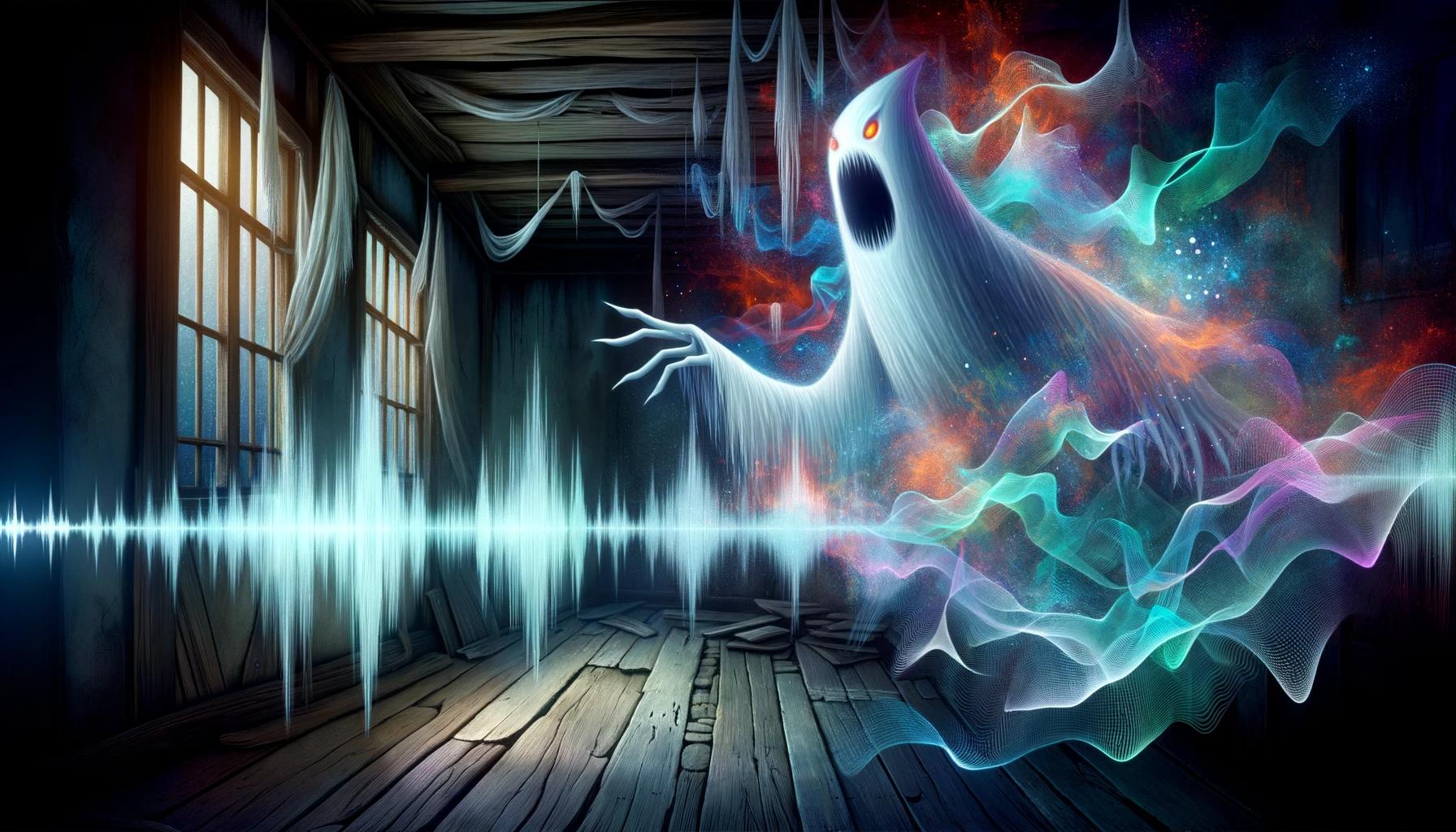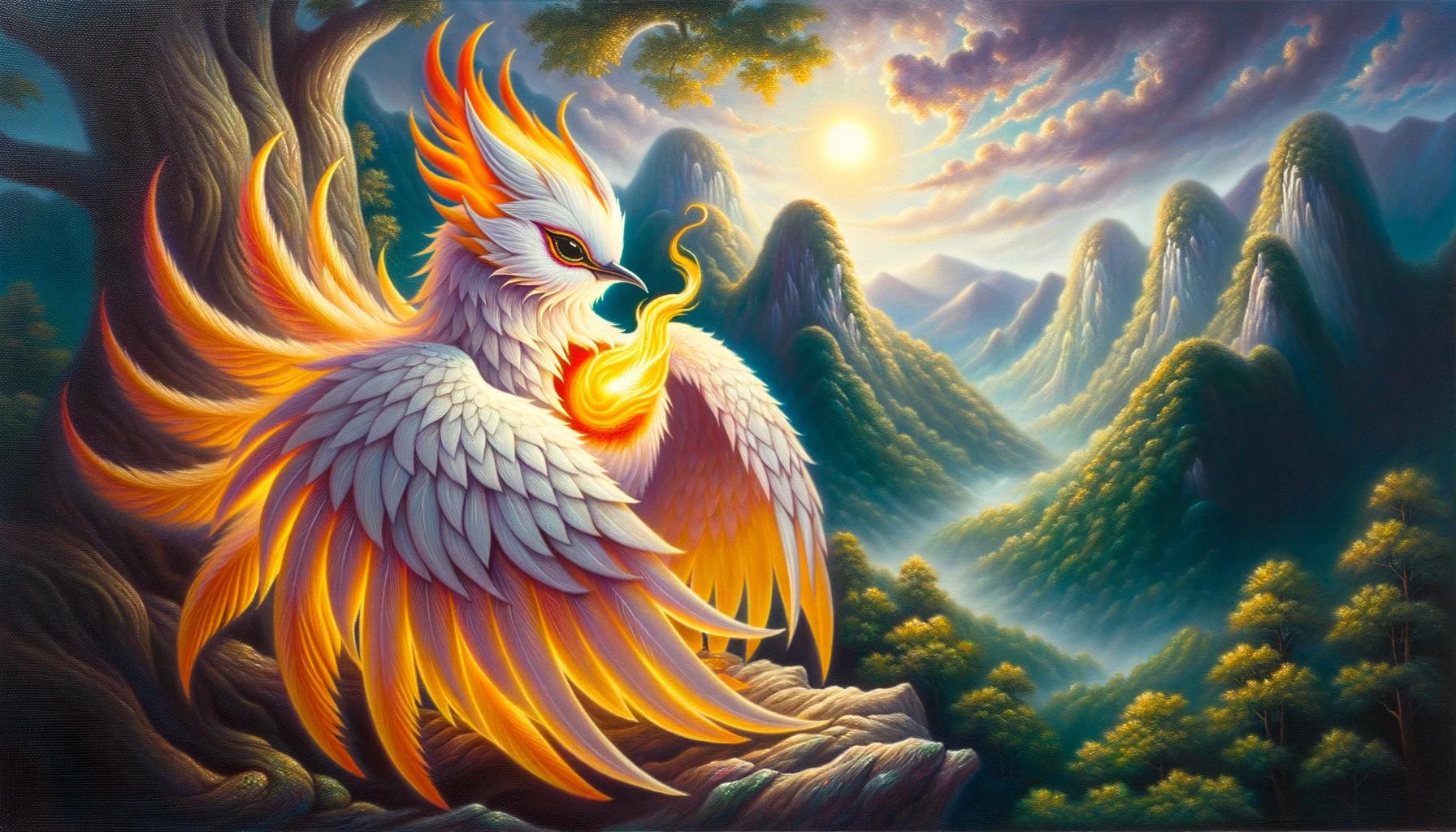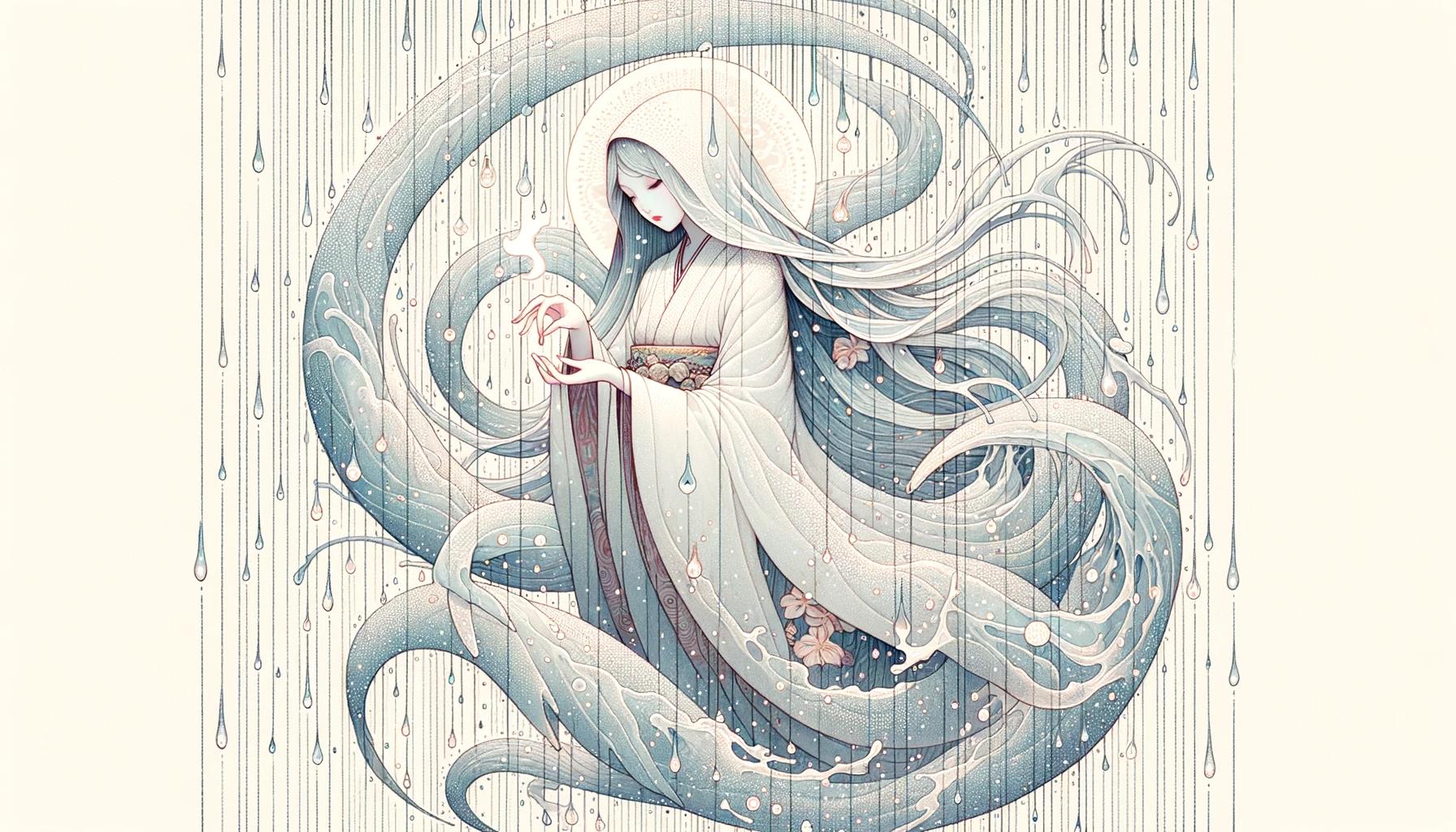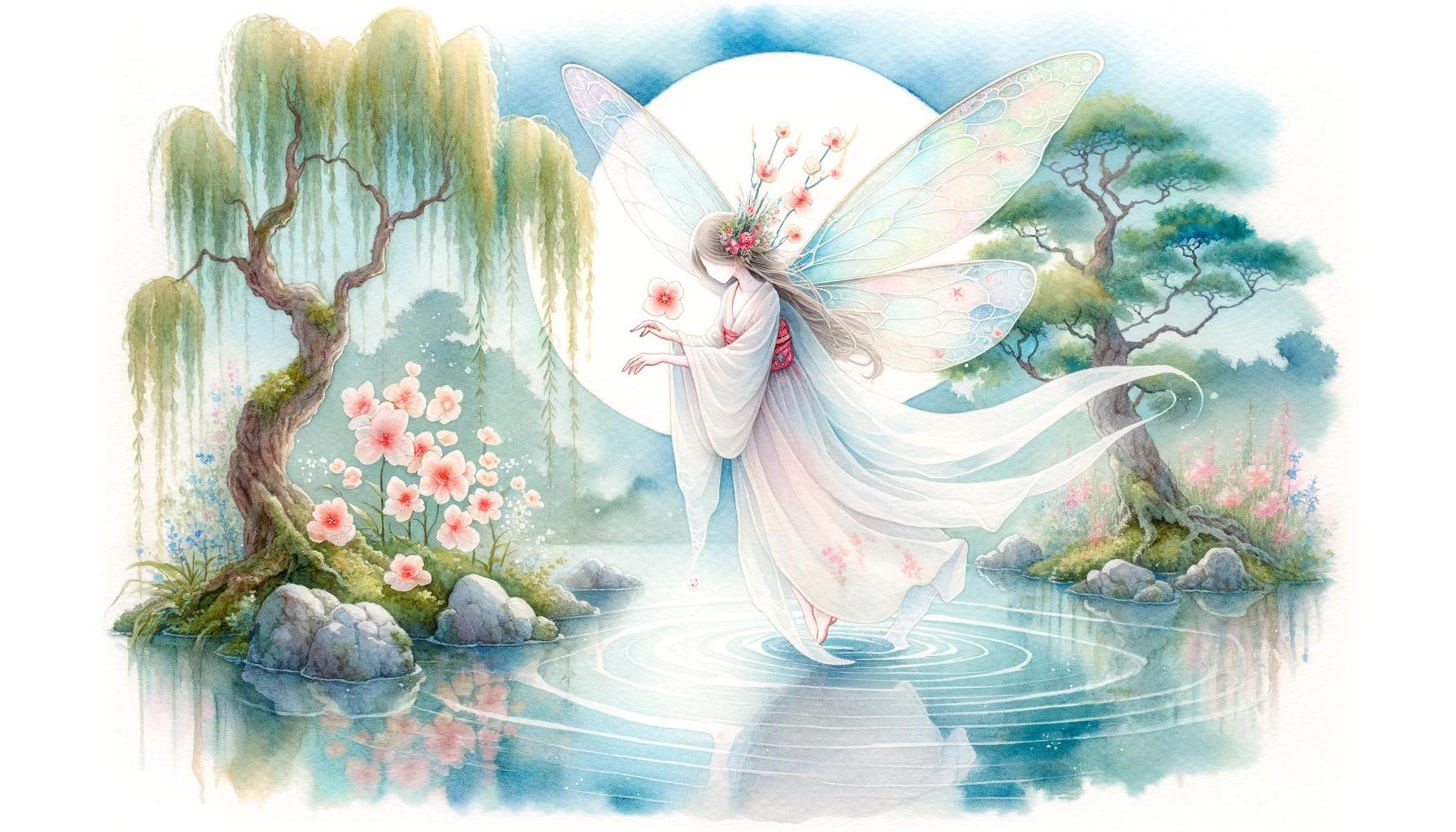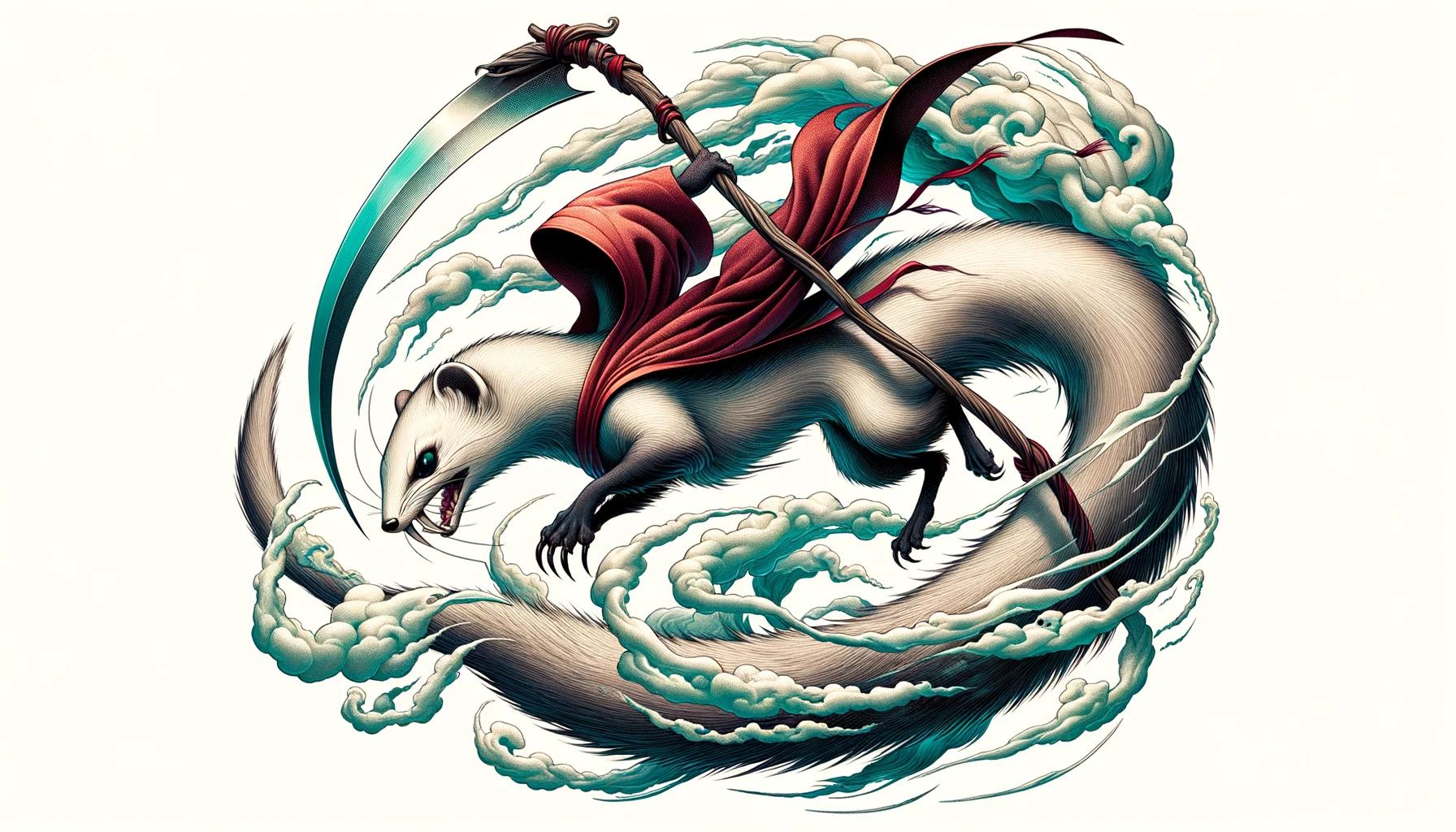Wanyudo Yokai: Terrifying Creatures and Their Role in Japanese Folklore
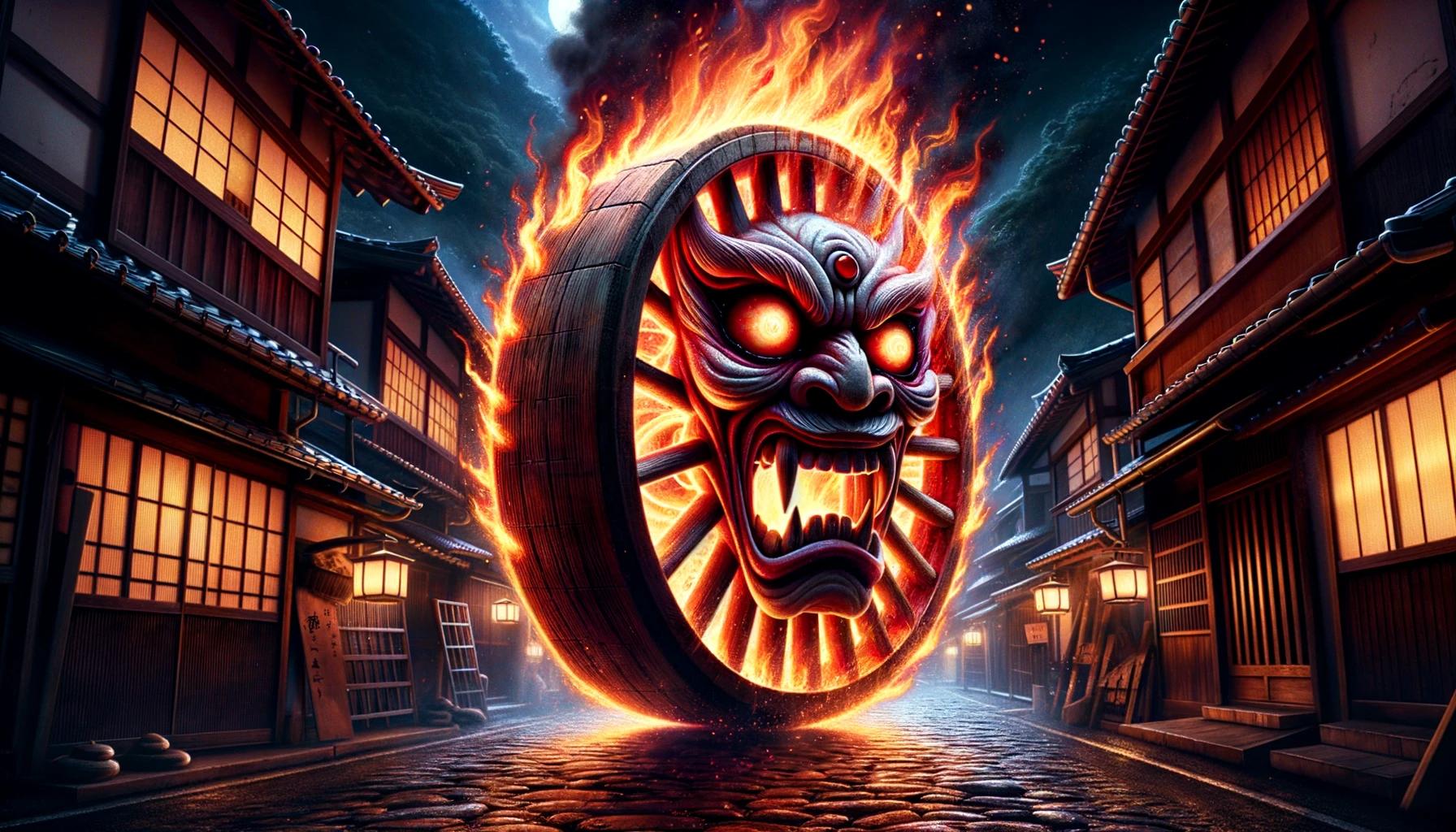
Wanyudo Yokai is a terrifying creature from Japanese folklore. With its unique and eerie appearance, this yokai is believed to be a servant of hell. It roams the Earth, seeking out evil individuals, inflicting pain, and capturing wrongdoers to be judged and condemned in the afterlife.
The mere sight of Wanyudo is feared, as it is said to bring calamity to families. In this article, we will explore the origins, characteristics, behavior, and cultural significance of Wanyudo Yokai, as well as its legends and modern interpretations.
The Origins and Background of Wanyudo Yokai
The Wanyudo Yokai is an intriguing creature deeply rooted in Japanese folklore and mythology. To fully understand its significance, we must explore the broader realm of Yokai in Japanese culture, the mythological influences that shaped the Wanyudo Yokai, and the historical and cultural context surrounding its existence.
Yokai in Japanese Folklore: An Overview
Yokai are supernatural creatures that have long been a part of Japanese folklore and mythology. They encompass a wide range of entities, from mischievous and benign creatures to terrifying and malevolent beings.
Yokai are believed to embody various aspects of nature, emotions, or spiritual concepts and often serve as cautionary tales or allegories.
Mythological Influences on Wanyudo Yokai
The Wanyudo Yokai draws its origins from a fusion of various mythological influences. One of the primary influences is the concept of punishment and retribution in the afterlife, as portrayed in Buddhist beliefs.
The image of a head trapped within a burning wheel is reminiscent of the torments suffered by sinners in Buddhist hell realms.
History and Cultural Significance of Wanyudo Yokai
The history of the Wanyudo Yokai can be traced back to ancient folklore and ghost stories shared among the Japanese people.
Over time, these tales became ingrained in the cultural consciousness, invoking fear and serving as a reminder of the consequences of one’s actions. The Wanyudo Yokai’s role as a servant of hell and its mission to capture and punish wrongdoers reflect deeper cultural values of justice, morality, and the desire for redemption.
- The Wanyudo Yokai encapsulates the collective fear and fascination with the afterlife, serving as a cautionary symbol of the consequences of evil acts and the need for repentance.
- Its unique appearance, with a head enclosed in a flaming wheel, embodies the torment and suffering that awaits sinners in the Buddhist underworld.
- Throughout history, the Wanyudo Yokai has captivated the imaginations of artists, writers, and storytellers, leaving an indelible mark on Japanese folklore and popular culture.
The origins and cultural significance of the Wanyudo Yokai provide a rich tapestry for exploring its mythology, symbolism, and enduring influence in Japanese society.
The Appearance and Characteristics of Wanyudo Yokai
The Wanyudo Yokai is a terrifying creature with unique and haunting attributes that instill fear in those who encounter it. This section explores its physical appearance, symbolic elements, and its role as a servant of hell.
Terrifying Physical Appearance
The Wanyudo Yokai’s appearance is undoubtedly terrifying. It is depicted as having a colossal head of a man trapped within a flaming cartwheel. The heads are shaved, resembling that of punished monks during their lives.
This grotesque image is enough to strike horror into the hearts of anyone who comes across it.
Symbolism of the Wheel and Flames
The wheel and flames surrounding the Wanyudo Yokai hold significant symbolism in Japanese folklore. The blazing wheel represents the eternal suffering and punishment of sinners, while the flames symbolize the purifying nature of divine retribution.
This visual imagery reinforces the creature’s role as both a guardian and enforcer of justice.
Role as Servants of Hell
The Wanyudo Yokai serves as a faithful servant of hell, carrying out the tasks assigned to them by patrolling the earthly realm. Despite their presence in hell, they spend the majority of their time on Earth, seeking out evildoers.
Their ultimate goal is to capture and transport wicked individuals, including corrupt priests and criminals, back to the depths of hell for judgment and condemnation. Once their sins have been redeemed, they return to Earth to continue their relentless pursuit of justice.
Wanyudo Yokai’s Behavior and Purpose
Wanyudo Yokai, as hell’s servant, exhibits distinctive behaviors and serves a specific purpose within Japanese folklore. This section explores the patrolling nature of Wanyudo, their inclination towards inflicting pain and suffering, and their role in capturing and judging wrongdoers.
Patrolling the Earth in Search of Evil
Wanyudo Yokai spends a significant portion of their existence patrolling the Earth, vigilant in their search for individuals who embody evil and malevolence. Their terrifying appearance and intimidating presence strike fear into the hearts of those who encounter them.
They roam both rural and urban areas, lurking in the shadows, silently observing and searching for their targets. Legends suggest that their presence is often associated with calamity and misfortune.
Inflicting Pain and Suffering
Wanyudo Yokai’s nature is deeply entwined with suffering.
Trapped within a burning wheel, they endure relentless torment as the flames and eternal rotation continue unabated. This perpetual agony fuels their desire to inflict pain on others. To witness a Wanyudo is to confront the stark reality of suffering, and their presence serves as a reminder of the consequences of one’s actions.
Capturing and Judging Wrongdoers
One of the primary purposes of Wanyudo Yokai is to capture wrongdoers and deliver them to the realms of hell for judgment and condemnation. With their ability to identify individuals tainted by villainy, Wanyudo becomes an instrument of cosmic justice.
Their preference lies in apprehending malicious criminals and corrupt priests, ensuring they face the appropriate consequences for their actions. By fulfilling this duty, Wanyudo seeks to restore balance to the world while seeking redemption for their own past sins.
Wanyudo Yokai’s behavior and purpose intertwine as they tirelessly carry out their role as hell’s servitors. Through their relentless pursuit of malevolence, their infliction of pain and suffering, and their just capture and judgment, Wanyudo Yokai serves as a cautionary reminder in Japanese folklore, encouraging individuals to reflect upon their actions and strive for redemption.
Cultural Perceptions and Beliefs about Wanyudo Yokai
Wanyudo Yokai, with its terrifying presence, has left a lasting impact on Japanese culture, giving rise to various cultural perceptions and beliefs surrounding its existence. Here, we will explore three key aspects in relation to the Wanyudo Yokai’s cultural significance: superstitions and fear associated with Wanyudo, protective measures and talismans, and the impact on families and communities.
Superstitions and Fear Associated with Wanyudo
Encountering a Wanyudo is regarded as an extremely ominous event. Its presence alone is believed to bring forth misfortune and calamity to not only individuals but also entire families. Consequently, a deep sense of fear surrounds the mere possibility of encountering this formidable yokai.
Legends and tales warn against looking directly at a Wanyudo, as it is said to possess the ability to snatch souls and transport them to the depths of hell through its flaming wheel.
This belief has ingrained a strong superstition among the populace, leading them to avoid roads and keep away from doors and windows when a Wanyudo is said to be near.
Protective Measures and Talismans
To ward off the malevolent influence of Wanyudo, people have developed various protective measures and rely on talismans.
Many households adorn their homes with prayer amulets and talismans. These objects are believed to possess the power to repel the demonic forces associated with the Wanyudo Yokai. The presence of these protective artifacts gives individuals a sense of security and reassurance against the perceived dangers that a Wanyudo brings.
However, it is important to note that the effectiveness of these protective measures remains a matter of personal belief and faith.
Impact on Families and Communities
The cultural significance of Wanyudo extends beyond individual beliefs and superstitions; its existence impacts families and communities as a whole. The fear associated with encountering a Wanyudo often creates a sense of unease and apprehension within communities, leading to shared caution and vigilance.
Families, in particular, emphasize the importance of reflecting upon one’s own actions and behavior, as the misdeeds committed may attract the attention of the Wanyudo Yokai, potentially resulting in devastating consequences.
Overall, the cultural perceptions and beliefs surrounding Wanyudo Yokai have permeated Japanese society for generations. The superstitions and fear associated with encountering this ghastly creature have shaped the beliefs and actions of individuals and communities alike.
Implementing protective measures and fostering self-reflection serve as a means to address the perceived threat and mitigate its potential impact.
Famous Legends and Tales Involving Wanyudo Yokai
Wanyudo Yokai, with its terrifying appearance and mysterious nature, has become a prominent figure in various folk tales and legends of Japan. These stories not only captivate the imagination but also offer insights into the cultural significance of this formidable creature.
The Story of the Woman from Kyoto
One famous legend tells the tale of a woman in Kyoto who dared to spy on a passing Wanyudo. As she observed the demon, it uttered a growl that sent shivers down her spine, saying, “Instead of watching, you should be contemplating your own sins.”
This chilling encounter serves as a cautionary reminder of the consequences of wickedness and the need for self-reflection.
Other Notable Mythical Accounts
Besides the story from Kyoto, several other mythical accounts involving Wanyudo Yokai have been passed down through generations. These tales highlight the creature’s role as a relentless enforcer of justice and punishment.
Whether it’s capturing evil criminals or corrupt priests, the Wanyudo spares no one in its quest to maintain order.
- The Tale of the Lost Magistrate: In this legend, a corrupt magistrate faces the wrath of a vengeful Wanyudo after abusing his power for personal gain.
- The Haunted Inn: Travelers stumble upon an eerie inn where they encounter a Wanyudo, leading to a night of terror and harrowing revelations.
- The Curse of the Forbidden Scroll: A forbidden scroll unleashes a vengeful Wanyudo, seeking retribution against those who dared to disturb its eternal slumber.
These legends and tales reflect the deep-rooted fears and moral lessons woven into the fabric of Japanese culture.
They serve as cautionary reminders of the consequences of evil deeds and the importance of living a righteous life.
Modern Interpretations and Popularity of Wanyudo Yokai
The terrifying Wanyudo Yokai holds a significant place not just in traditional folklore, but also in modern popular culture. Its distinctive appearance and compelling stories have captured the imagination of artists, writers, and creators across various mediums.
Wanyudo Yokai in Anime and Games
The world of anime and video games has embraced the eerie allure of the Wanyudo Yokai. Its portrayal in animated series, such as “Mushi-Shi” and “Gegege no Kitaro,” has contributed to its enduring popularity.
The Wanyudo’s role as a formidable antagonist or a mysterious entity adds suspense and intensity to these narratives, captivating viewers and gamers alike.
In video games, Wanyudo is often featured as a formidable boss character, challenging players to confront its fiery wrath.
Games such as “Nioh” and “Okami” introduce players to the chilling atmosphere and daunting battles against this demonic creature.
Influence on Japanese Art and Media
Wanyudo Yokai’s influence extends beyond entertainment media and impacts Japanese art as well. Artists draw inspiration from this menacing figure, incorporating its distinctive features into their paintings, sculptures, and prints.
The use of vivid colors and intricate details captures the essence of Wanyudo’s terrifying presence.
In literature, Wanyudo Yokai continues to inspire authors who explore its dark and mysterious nature.
Its appearances in horror novels and short stories create a sense of unease and dread, reminding readers of the enduring power of this ancient creature.
Wanyudo Yokai in Contemporary Culture
Even in contemporary culture, the legacy of Wanyudo Yokai persists.
Its haunting presence serves as a cautionary tale, urging individuals to reflect on their own sins and avoid the path of evil. The enduring popularity of Wanyudo is a testament to its ability to resonate with societal fears and the eternal struggle between good and evil.
Additionally, the Wanyudo Yokai’s imagery and symbolism have found their way into fashion and merchandise. T-shirts, posters, and accessories featuring its fearful visage cater to fans who appreciate its macabre aesthetic and the intriguing folklore that surrounds it.
The continued presence of Wanyudo Yokai in modern interpretations, along with its influence on diverse forms of media and its allure in contemporary culture, solidify its status as one of Japan’s most captivating and chilling yokai.
Frequently Asked Questions about Wanyudo Yokai
Are Wanyudo Yokai real?
Wanyudo Yokai is a mythical creature from Japanese folklore, often depicted as a terrifying head trapped within a flaming cartwheel. While it holds a significant place in Japanese mythology, it is important to note that yokai are considered supernatural beings and not real entities in the physical world.
However, the legends and stories surrounding Wanyudo Yokai continue to captivate people’s imaginations and are deeply ingrained in Japanese culture.
How do you protect yourself from encountering a Wanyudo?
Encountering a Wanyudo Yokai is a frightening prospect, but fortunately, there are beliefs and practices to protect oneself from such encounters. Folklore suggests the use of various protective measures, such as hanging amulets or charms at doorways or carrying them as personal talismans.
Additionally, avoiding desolate places, especially at night, and showing respect towards traditional Japanese customs and spiritual practices are also believed to act as safeguards against encountering Wanyudo Yokai.
What other yokai are similar to Wanyudo?
Within Japanese mythology, several other yokai are reminiscent of Wanyudo in their appearance or behavior.
One such yokai is Gashadokuro, a giant skeletal creature formed from the bones of people who died from starvation. Similarly, Hone-onna, a ghostly yokai depicted as a beautiful woman with exposed bones, shares similarities with Wanyudo in its eerie and otherworldly nature.
While these yokai have their unique characteristics, they all contribute to the rich tapestry of Japanese folklore.
Can Wanyudo Yokai be redeemed?
According to the tales and legends, Wanyudo Yokai’s purpose is to capture and judge wrongdoers, primarily criminals and corrupt priests, bringing them to the infernal realm for their crimes. It is believed that once these individuals face judgment and receive their just punishment, Wanyudo Yokai’s mission is fulfilled, and they may attain redemption.
However, it is important to remember that the concept of redemption within the realm of yokai mythology is often portrayed as connected to the afterlife and the supernatural world.
.

